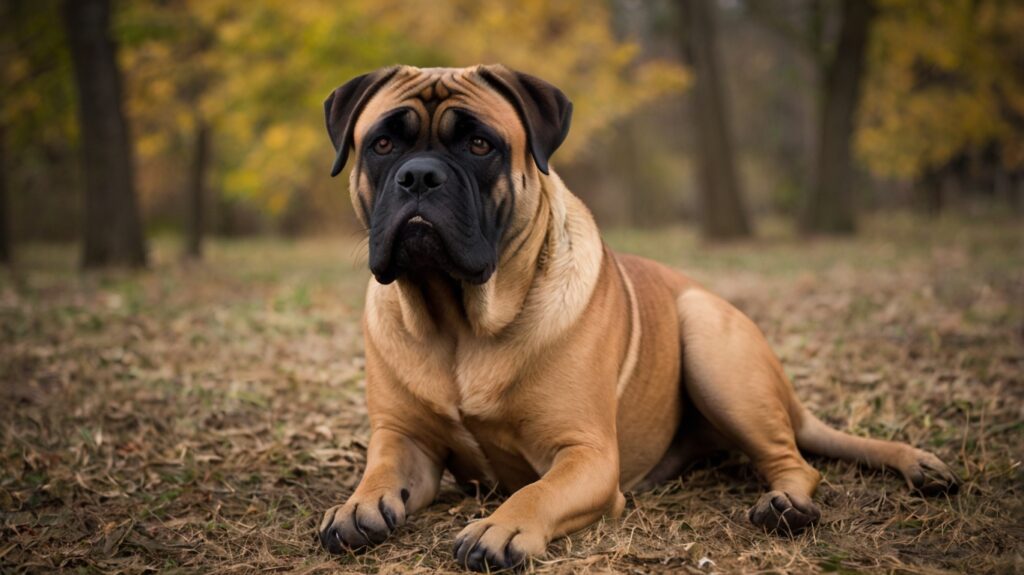Table of Contents
- Introduction
- History of the Bullmastiff
- Physical Characteristics
- Temperament and Personality
- Training and Exercise Needs
- Health and Lifespan
- Grooming and Care
- Is a Bullmastiff Right for You?
- Conclusion
- FAQs
Introduction
The Bullmastiff is a powerful yet gentle breed known for its loyalty, intelligence, and protective nature. Originally bred as a guard dog, this large and muscular canine has evolved into a loving family companion. In this guide, we’ll explore the Bullmastiff’s history, temperament, care requirements, and more to help you determine if this breed is the right fit for your home.

History of the Bullmastiff
The Bullmastiff originated in 19th-century England, where gamekeepers needed a fearless yet disciplined dog to deter poachers. By crossing the Mastiff with the Bulldog, breeders created a powerful yet agile dog capable of silently tackling intruders without mauling them. Recognized by the American Kennel Club (AKC) in 1933, the Bullmastiff has since become a beloved working and companion dog.
Physical Characteristics
- Size: Males: 25–27 inches, 110–130 lbs; Females: 24–26 inches, 100–120 lbs
- Coat: Short, dense, and weather-resistant
- Colors: Fawn, red, or brindle with a dark muzzle
- Lifespan: 8–10 years
The Bullmastiff has a broad head, muscular build, and an imposing presence, making it an excellent deterrent against threats.
Temperament and Personality
Despite its intimidating appearance, the Bullmastiff is affectionate, calm, and devoted to its family. Key traits include:
- Loyal & Protective – Naturally guards its home but is not overly aggressive.
- Gentle with Children – Patient and tolerant, making it a great family pet.
- Intelligent & Trainable – Responds well to firm, consistent training.
- Low Energy Indoors – Enjoys lounging but needs moderate exercise.
Training and Exercise Needs
- Training: Early socialization and obedience training are crucial due to the breed’s size and strength. Positive reinforcement works best.
- Exercise: Daily walks (30–60 minutes) and play sessions help maintain health. Avoid overexertion in hot weather.
Health and Lifespan
Common health issues in Bullmastiffs include:
- Hip & Elbow Dysplasia
- Bloat (Gastric Torsion)
- Heart Conditions
- Cancer
Regular vet check-ups, a balanced diet, and weight management can help extend their lifespan.
Grooming and Care
- Brushing: Weekly brushing minimizes shedding.
- Bathing: Only when necessary to preserve natural oils.
- Nail Trimming: Monthly to prevent overgrowth.
- Dental Care: Regular teeth brushing prevents gum disease.
Is a Bullmastiff Right for You?
This breed is ideal for:
✔ Experienced dog owners
✔ Families with space (not suited for small apartments)
✔ Those seeking a loyal, low-maintenance guardian
Not recommended for:
✖ First-time owners without training experience
✖ Highly active households expecting a hyper dog
Conclusion
The Bullmastiff is a devoted, protective, and loving companion perfect for the right family. With proper training, socialization, and care, this gentle giant can be a wonderful addition to any home.
FAQs
1. Are Bullmastiffs aggressive?
No, they are protective but not naturally aggressive. Proper training ensures good behavior.
2. How much exercise does a Bullmastiff need?
About 30–60 minutes of daily exercise, including walks and playtime.
3. Do Bullmastiffs drool a lot?
Yes, they can drool, especially after eating or drinking.
4. Are Bullmastiffs good with kids?
Yes, they are gentle and patient with children when properly socialized.
5. What’s the average lifespan of a Bullmastiff?
8–10 years, though some live longer with excellent care.
